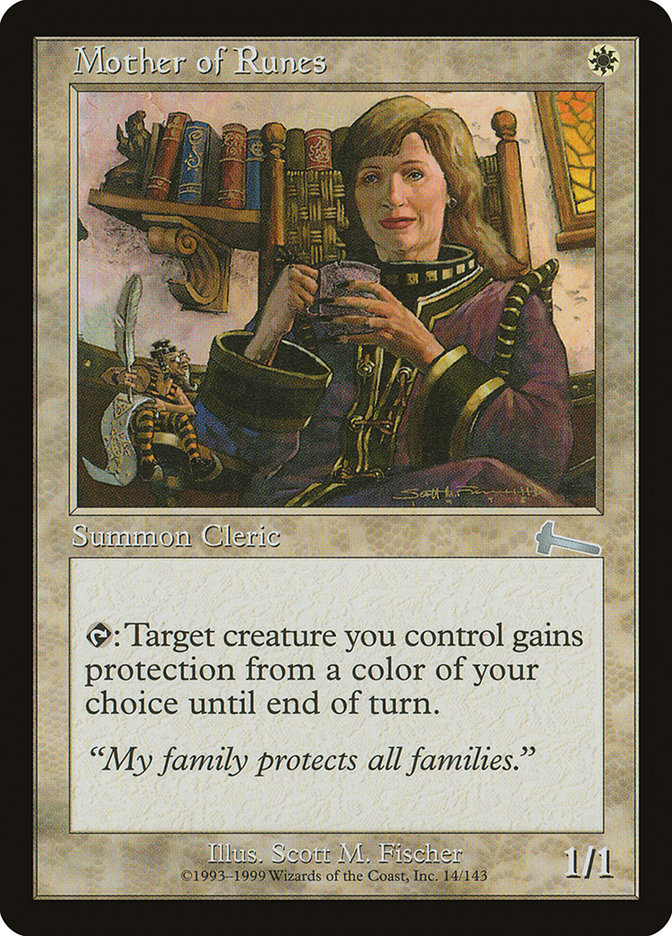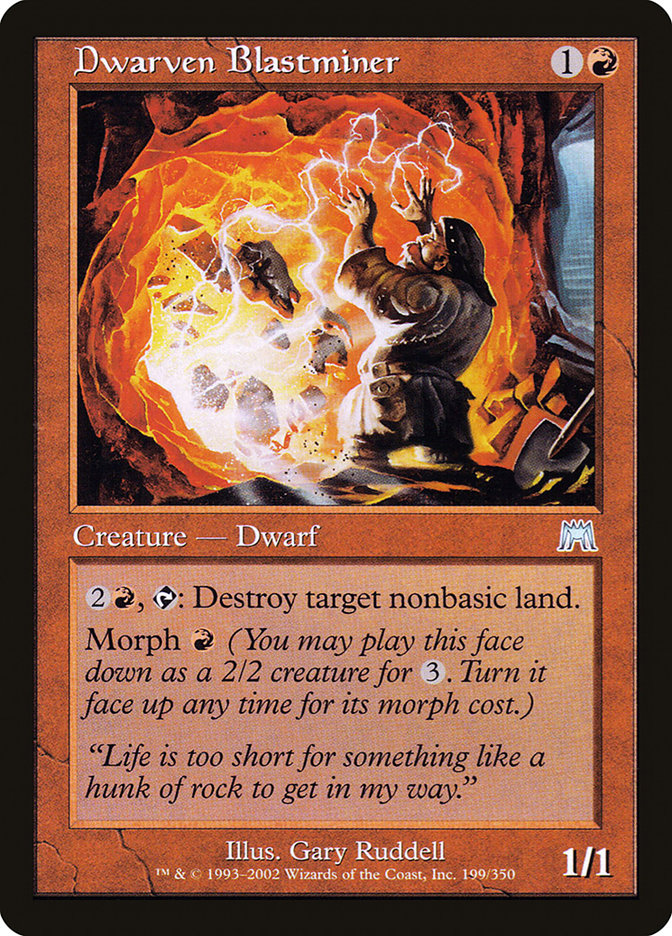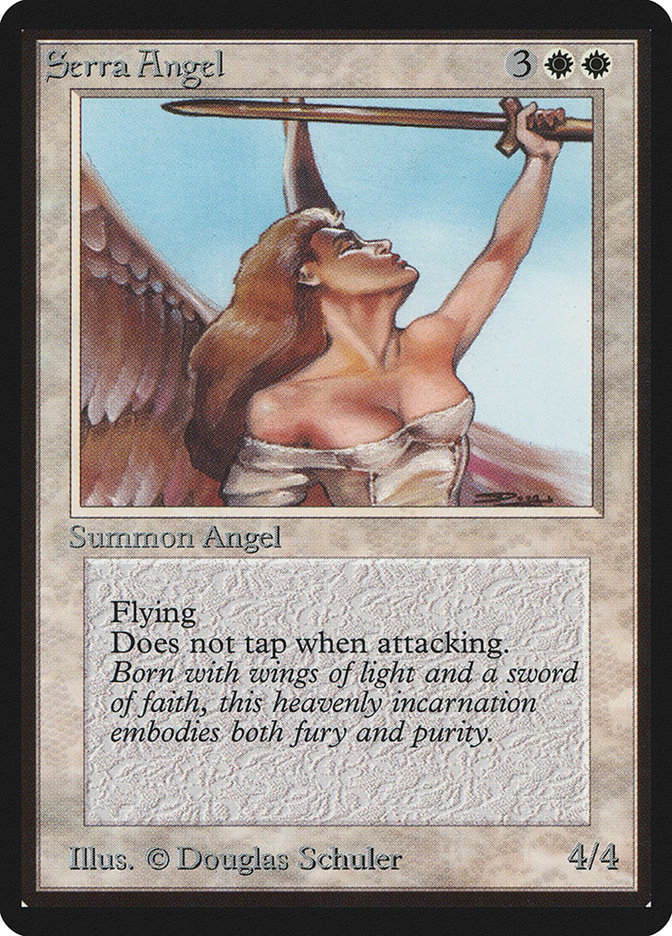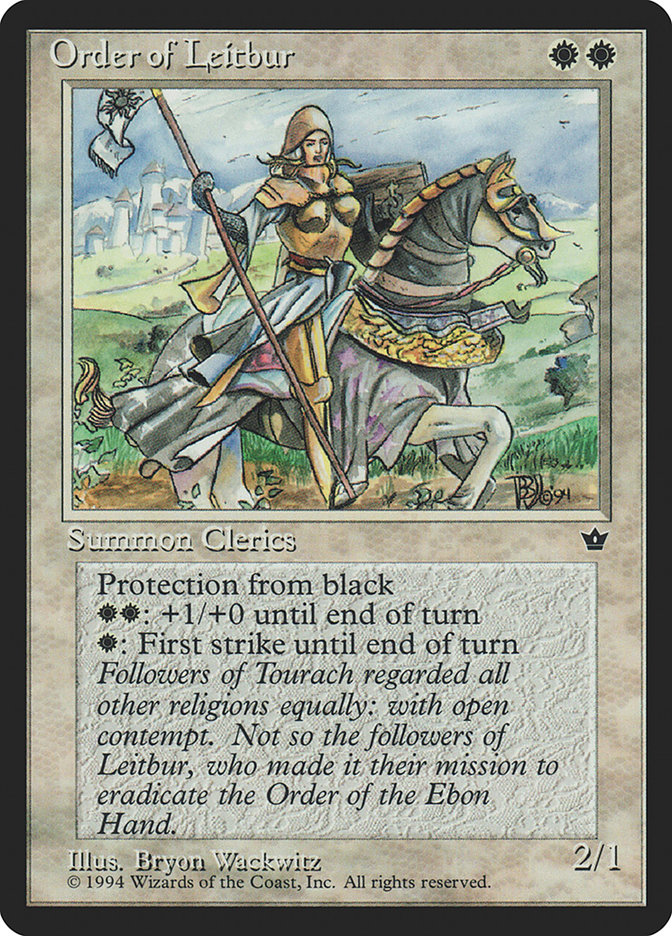I’ve been writing about Standard a lot lately, but something happened at the StarCityGames.com Invitational weekend in New Jersey that really got me thinking.
Death and Taxes just looked really good. I mean really good.
There was this moment that I was on camera with Matthias Hunt and he said something—perhaps in jest, perhaps in seriousness—that just made me take a pause. It was something like "I don’t know—maybe Death and Taxes is just the best deck. Every time I see it on camera, it’s winning, even when it gets lackluster draws."
Now, that isn’t a verbatim quote of what he said, but it’s pretty close. I rewatched some of the footage and reheard him say it, and I thought back to not only the matches that I saw when I was commentating on camera but also to some of the matches that I watched walking around the room on my off hours.
And it was winning.
Perhaps I was getting a biased selection. After all, it was being piloted by two talented players, Thomas Enevoldsen, who won a Grand Prix this year with Death and Taxes in Strasbourg, and Michael Bonde. These two Danish players made the long trip over the ocean to play in the SCG event because they believed it was worth their time. They were very practiced with the deck. But to me I think it speaks volumes that they thought so much of their deck that they were willing to make the StarCityGames.com Invitational a part of their journey here to the States.
They did phenomenally, with Enevoldsen going 7-1 and Bonde going 6-1-1 with his loss playing for Top 8 to Dave Shiels in the Legacy portion of the event. That in and of itself is enough to make one take notice. Of course, then Jonathan Kurpaska showed up to take second in the Legacy Open on Sunday.
Huh.
I was so impressed that I was incredibly disappointed that I couldn’t go to the StarCityGames.com Open Series in Minneapolis this last weekend, if only to play it in the Legacy Open.
Maybe a part of me has been unfair to Death and Taxes. It had this element of fairness to it that was a little uninspiring to me. In one weekend’s coverage with Patrick Chapin in the city of Detroit, Patrick got me to laugh again and again with his denigrating of one card:
"She is the enemy."
"How can you hate Mom?" I said.
"The good guy decks play cards like Dark Ritual. They play Brainstorm. What is this fair stuff? I don’t trust it!"
Again, like with Matthias, that’s not verbatim, but it’s the gist.
Chapin was hating on a pair of decks that weekend: Death and Taxes and Maverick (and variants). For Chapin, Magic is all about exploding potential. It’s about the joy of putting one card with another card and watching something incredible happen. Mom (Mother of Runes) is one of those cards that works in the exact opposite way.
Mom says "no."
But Mother of Runes doesn’t say it in the Force of Will, Counterspell style way that Chapin prefers. Instead, it just makes it not reasonable to make your plays. It says to you "I’m not actually going to tap. I’m just going to sit here, and if you dare do something, then I’ll step in."
In many ways, I think that Chapin’s dislike of Mother of Runes and my love of it underscores a particular difference in how we like to play the game. Chapin likes to have fun by doing something awesome (don’t we all?); I find myself really enjoying those games where my opponent isn’t allowed to do anything. Perhaps this is why I’ve always loved Wildfire, Stasis, and other "unfun" cards like Counterspell, Pillage, and my favorite creature ever:
If you watch the finals match of the Legacy Open, New Jersey hero Gerard "Capashen" Fabiano ended up tearing apart his Death and Taxes opponent in the finals, and it was largely on the back of some well-played Stifles on Mother of Runes, opening up a cascade of removal that cleared the Death and Taxes player of its collection of den mothers.
Watching Gerard play against Death and Taxes with the other Legacy deck of the weekend (Erik Smith U/W/R Delver*), I was still struck by how resilient Death and Taxes was despite the fact that Gerard took the deck down. A lesser player or a player who didn’t respond to the various threats and answers that Death and Taxes presented would definitely have fallen, I think. Gerard played incredibly tightly, though, and took the event down.
You can see for yourself:
Death and Taxes has had a lot of success in Europe but not really had nearly the same impact here in the United States. For that reason, a lot of people it seems dismissed the deck as just succeeding because it was played “only” in Europe. All that being said, at Grand Prix Strasburg this year, Thomas Enevoldsen and Michael Bonde both made Top 8 of Legacy event with well over 1,000 players and only lost to each other in the Top 8, which included RUG Delver, BUG Delver, Sneak and Show, Merfolk, and Punishing Maverick, a very respectable Top 16. To make things even more impressive, they played the same 60 cards in their main and largely the same sideboard.
Here is Enevoldsen’s GP Strasbourg-winning Death and Taxes deck:
Creatures (27)
- 4 Mother of Runes
- 2 Mangara of Corondor
- 2 Aven Mindcensor
- 3 Flickerwisp
- 4 Stoneforge Mystic
- 3 Mirran Crusader
- 4 Phyrexian Revoker
- 1 Fiend Hunter
- 4 Thalia, Guardian of Thraben
Lands (23)
Spells (10)

Bonde played two Oblivion Rings and Relic of Progenitus, cutting a Leonin Relic-Warder and Sunlance for the extra cards.
What Is Current Death and Taxes?
When I first started covering Legacy a few years ago, I was a novice enough in the format that I didn’t really know what the archetype was. I’d seen Mangara of Corondor tricks in the past but didn’t know that the white "fair" deck was actually its own archetype. It was never exactly a White Weenie deck per se, but it had some very cosmetic similarities that really broke apart at first glance.
In talking about the archetype last weekend, I was asked what the archetype was that set it apart, and I couldn’t help but think of the first Mike Flores deck that got any notice on the Internet. I want to say it was around 1997. The deck was "Pile of B*tches"; even then Mike enjoyed flavor in the naming of decks, though he attributes the name to Elliot Fertik. The deck was so named because of the presence of Aeolipile as well as a ton of female-themed art creatures:
Mike was fond of saying, "It’s not White Weenie; it’s Pile of B*tches!" And one of the things that he was certainly correct about is that the deck performed very differently than a White Weenie deck. If you’ve been following the recent career of Craig Wescoe or Paul Rietzl, you’re likely to have seen a fair number of decks that follow the White Weenie mold. They attempt to end the game quickly through presenting a solid clock, often backed up with some kind of pump (say through Crusade or the growth of a Champion of the Parish) to speed up the clock. It is a pure aggro deck trying to end the game quickly and running a few effects to stymie the opponent’s game plan, generally going for the throat.
Here is Pile of B*tches (I’m not sure if it was designed by Flores or Elliot Fertik, but I always thought of as Mike’s):
4 Aeolipile
1 Zuran Orb
4 Armageddon
1 Balance
4 Disenchant
1 Land Tax
4 Order of Leitbur
4 Order of the White Shield
4 Serra Angel
4 Swords to Plowshares
2 Wrath of God
4 Kjeldoran Outpost
4 Mishra’s Factory
18 Plains
1 Strip Mine
SB:
1 Black Vise
4 Nevinyrral’s Disk
4 Serrated Arrows
2 Winter Orb
2 Abbey Gargoyles
2 Wrath of God
Pile of B*tches was more than a little bit different in that it could present single threats that could impact the board or it could go for a swarm with a heavy WW Knight draw. Ultimately, though, this deck slowed things down compared to a White Weenie deck, which might run Savannah Lions, and instead played for a plan that in years to come we would begin to call midrange. In many ways, I view Pile of B*tches as one of the first distinctly midrange decks that was actually focused on being a midrange deck (even if it didn’t know what that was), instead of being a collection of cards that were just "the best cards" and ended up crafted as a midrange deck.
To take this back to Death and Taxes, it is worth noting the joke of the deck name, at least as I first heard it from Legacy aficionado I@n DeGraff: "All that is certain in life is death, taxes (and White Weenie)". Now, I@n is not credited with this joke, but I first heard it from him. Also, though, there is something that is lost in this joke:
Death and Taxes is not White Weenie.
Just in case you’re not sure what a White Weenie deck is based on my description above, here is an example:
Creatures (22)
- 4 Figure of Destiny
- 4 Ethersworn Canonist
- 4 Knight of the White Orchid
- 2 Ranger of Eos
- 4 Steppe Lynx
- 4 Student of Warfare
Lands (23)
Spells (15)

This deck is really trying to go for the jugular. It certainly can interact with the opponent though. Yes, it does have Ethersworn Canonist. It even has a few Brave the Elements acting as a split card Counterspell / Falter.
Ultimately, though, this is a deck trying to end the game.
Death and Taxes, on the other hand, is much, much less concerned with ending the game. Instead, it tries to mimic a Prison deck and make the opponent’s plays more and more useless. As every turn progresses, if Death and Taxes is putting permanents on the board, the effectiveness of practically any opponent starts approaching zero. Mother of Runes once active nixes the first removal spell that an opponent might use in a turn. Cards like Thalia, Guardian of Thraben start choking out your opponent’s mana. Aether Vial can cause problems with an opponent’s spells while also creating an incredible boost of faux mana by dropping problematic surprises into play either during a critical moment or at the end of turn, creating an almost fake "haste" ability.
Heck, in the current metagame in Legacy with the ubiquitous presence of Stoneforge Mystic, even the most obvious kill card in the deck, Mirran Crusader, actually acts like another form of lock out. The protection from black ends up making the 0/0 Germ from Batterskull look pretty impotent, and the ability for a Batterskull to hop onto another card is often very difficult against Death and Taxes.
When I say that the deck is like Prison (the classic Winter Orb / Icy Manipulator deck from about one million years ago), the thing that is interesting about Death and Taxes is that it achieves all of the locking out of an opponent’s spells with utility creatures rather than noncreature enchantments and artifacts. It helps out the lock out of an opponent by running the full set of Rishadan Port and Wasteland, while Aether Vial lets it largely ignore its own lack of mana.
Add on Mangara of Corondor to lock out any permanent (and the comborific terror of Mangara with a Karakas, bouncing the Mangara in response to it removing itself from the game and often popping right back onto the table with a Vial for more immediately) and there is a way in which you feel like you are back in the good ol’ ancient days of the true locking decks. Watching it play last week, I couldn’t not be impressed.
The Recent Versions of Death and Taxes
Creatures (27)
- 4 Mother of Runes
- 2 Mangara of Corondor
- 2 Aven Mindcensor
- 3 Flickerwisp
- 4 Stoneforge Mystic
- 3 Mirran Crusader
- 4 Phyrexian Revoker
- 1 Fiend Hunter
- 4 Thalia, Guardian of Thraben
Lands (23)
Spells (10)

Thomas Enevoldsen didn’t make Top 8 of the Invitational, but in the Legacy Open the next day, Jonathan Kurpaska did make Top 8 with his version of Death and Taxes, ending his run in the finals with this list:
Creatures (27)
- 4 Mother of Runes
- 3 Mangara of Corondor
- 4 Serra Avenger
- 4 Stoneforge Mystic
- 4 Mirran Crusader
- 4 Phyrexian Revoker
- 4 Thalia, Guardian of Thraben
Lands (22)
Spells (11)

Kurpaska’s list is similar to Enevoldsen’s but is certainly more concerned with getting the kill. While Enevoldsen only has three cards that could be called "dedicated kill" cards in the form of three Mirran Crusaders, Kurpaska has four and four Serra Avengers on top of that, not to mention a third Mangara of Corondor to achieve the combo Karakas lock out. A Sword of Fire and Ice also joins the team. All of this is at the cost of some of the "tricksy" elements of the deck: Aven Mindcensor, Fiend Hunter, and Flickerwisp, not to mention a land (and a different land mix).
Of all of the differences between the two lists, I do have to say that I definitely prefer Enevoldsen’s, mostly because it pushes the envelop more in disrupting the opponent. I don’t like to see cards like Serra Avenger at all. I don’t want to see a "pure" kill card in a deck like Death and Taxes; instead, I want to see cards in the deck that make my opponent’s life hellish. Sword of Fire and Ice is potentially such a card if you think you can find room for it, but I was very much unimpressed with Serra Avenger, which basically just played the role of a creature with power and toughness.
A long time ago, Zac Hill made fun of Tarmogoyf in an early Magic Show in Valencia, knocking on Tarmogoyf as "just a creature with power and toughness. Sometimes you don’t need a creature with power and toughness."
To put this in the context of Legacy, think about how many decks don’t run Tarmogoyf right now. While RUG Delver is happy to run Tarmogoyf as purely a creature with "power and toughness," it seems to me that all of the rest of the cards are actually using Tarmogoyf as a utility creature of sorts. They are using it as a creature that can hold the board and keep an opponent from attacking and then eventually turn the tables into an attack. Decks like Maverick rarely end up using Tarmogoyf simply because they don’t need a creature to play that role; instead, they need creatures that can interact with the opponent meaningfully—setting up a race is basically pointless to them.
Serra Avenger is the mono-white Tarmogoyf, and even though it has evasion and can carry an Umezawa’s Jitte, it isn’t a very exciting creature to be dropping into play when your opponent can be doing any number of unfair things. I think that Enevoldsen has it completely right in eschewing the "go for the kill" cards and adding in all of these cards that can really cause a problem for the opponent’s game plan.
Another benefit of running the hate cards is getting far more utility out of the already incredible card Aether Vial. I actually learned an incredible lesson just the other day from my boss Bob Maher. I’m very lucky to be able to spend time with him at work because he is just a font of Magic wisdom.
Going into his office, he had the World Magic Cup and World Championship on the big screen basically the entire time that it was broadcasting. At a certain moment, Brian Kibler was playing against Ben Stark in Modern. Kibler was playing a deck the coverage was calling G/W Hate Bears. In one moment, there was a flurry of interaction between some fetchlands from Stark, a pair of Aether Vials, and some disruptive cards like Aven Mindcensor and Leonin Arbiter. Things ended up working out okay for Stark, but it could have gone much, much worse.
Then Maher blew my mind a little.
"Maybe it’s just because I’ve watched Rietzl play with Aether Vials, but I’d be activating those Vials every single chance I got even if I had nothing. At the end of turns, in response to various effects. Sometimes you can just get your opponent to jump the gun on things. People make a ton of mistakes on both sides of the Vial then; sometimes they don’t respond when they should, and sometimes they respond to a threat that doesn’t exist yet."
If you’re not sure what he means, for a lot of the state-based effects in a deck like Hate Bears or Death and Taxes, you can’t respond to Aven Mindcensor once it is already in play. Aether Vial doesn’t put a creature on the stack; it puts it into play. Once it’s chosen, it’s there.
I was already pumped to play the deck. Now I guess I’m going to have to buy a few more Karakas. Darnitall, Bob.
Until next week,
*Erik’s U/W/R Delver might be the actual best deck in Legacy right now. I can’t tell you how much this deck impressed me.
For you list-lovers:
Creatures (12)
Lands (19)
Spells (29)






